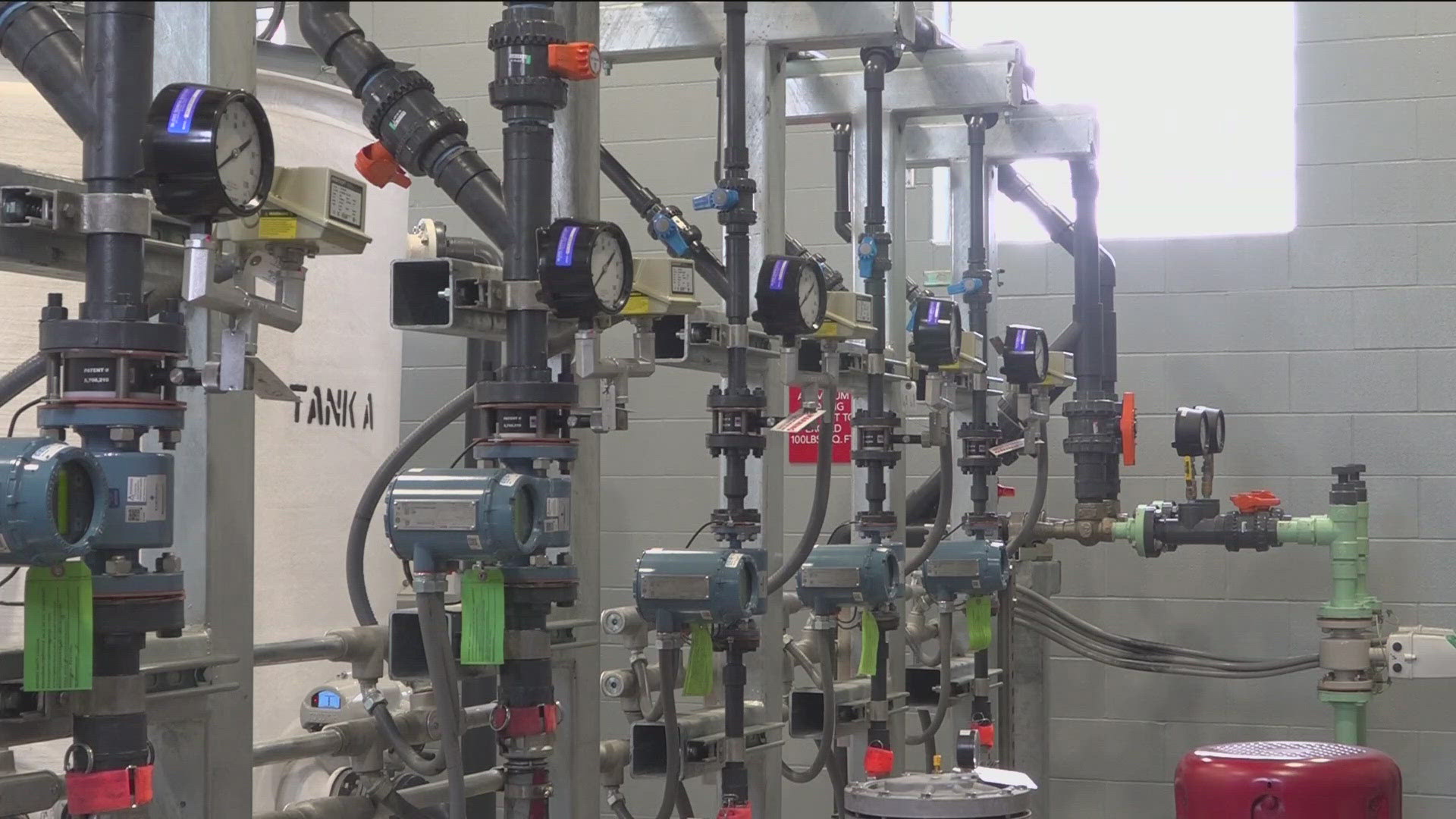TOLEDO, Ohio —
The 2014 water crisis was a time of uncertainty for Toledo residents. For the Toledo water treatment plant, it was an opportunity.
Brian Loudenslager, operator of record for the Toledo Water Treatment Administration, said it was a chance for work to be done.
"I think the hardest part of it was the change in public perception," Loudenslager said. "I think that's the part I've always kept with me, because there's just a lot of us in this field that take what we do serious. We're passionate about what we do and when people think differently, that's really hard."
He said in the past decade there have been a lot of changes that have happened at the water treatment center.
Loudenslager said more than $500 million of investments made to the treatment facility. There have been major infrastructure improvements, too, including adding a 40 million gallon expansion to the facility.
Service pumps and ozone water treatment technology has been added. Ozone helps with carbon, taste, odor and microcystins — toxins produced by cyanobacteria —, according to Loudenslager.
The treatment facility currently uses a multi-barrier approach to keep the water clean.
"There is not just one just treatment technique that removes microcystins," Loudenslager said. "We have right now, I would say probably six different portions of our treatment system that removes microcystins."
Another addition to the facility included the use of a PhycoSens sensor. Researchers from the University of Toledo's Lake Erie Center work with the water treatment facility to monitor the sensor.
"That instrument is actually a real-time fluorescence-based sensor that has allowed us to see changes of populations of cyanobacteria, also called blue-green algae," said UT postdoctoral associate Kuo-Pei Tsai.
Tsai said the sensor is able to track a potential outbreak of cyanobacteria toxins and runs tests every 15 minutes.
"That instrument is able to provide the water treatment plant operator the real-time data to then take precautions against potential catastrophic situation like we had in 2014," Tsai said.
The advancements at the facility would have happened eventually as there was a 20-year plan already in the works, but the 2014 water crisis sped up that process, according to Loudenslager.
"We knew we had to increase our treatment plants ability to handle these events for years and years to come," he said.

